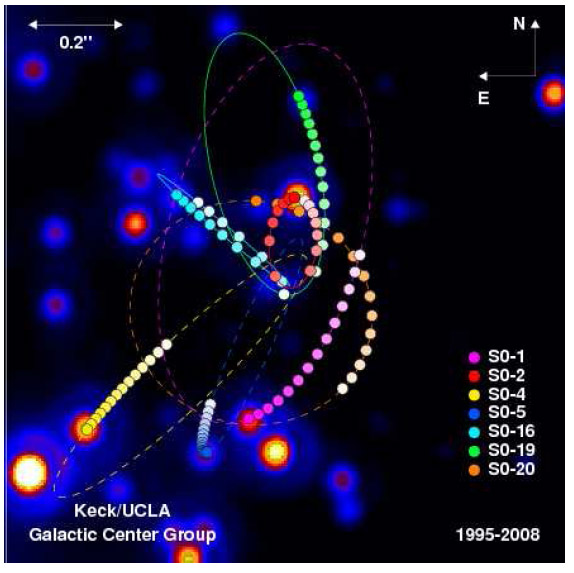In honor of Black Hole Week, NASA’s Scientific Visualization Studio has released an amazing video showing how several supermassive black holes scale with our solar system. It’s definitely worth checking out because it’s an excellent example of just how overwhelmingly huge some black holes are.
Interestingly, astronomers have only observed two black holes directly. The first was the supermassive black hole in M87, and the second was Sag A*, which is in the heart of the Milky Way. From these direct observations, we know just how large these black holes are. But what of the other black holes in the video? For that, astronomers have to do a bit of detective work. The size of a black hole depends on two things: mass and rotation. Of these, mass is the largest factor by size, so if astronomers can determine the mass of a black hole they have a good idea of its size.

Since they can’t directly observe most black holes, astronomers rely on how black holes affect the environment around them. The most direct way would be to look at the motion of stars orbiting close to the black hole. The orbital speed of these stars depends on the mass of the central black hole, just as the orbital speed of planets depends on the mass of the Sun. This is how we first determined the mass of Sag A*. For years we have observed the motions of nearby stars, which told us Sag A* had a mass of about 4 million Suns. Direct observations later confirmed this.
But this is only possible within the Milky Way. Other galaxies are too distant for us to observe individual stars orbiting the central black hole. Fortunately, there are other ways to determine the black hole’s mass. One of these is known as [reverberation mapping]https://briankoberlein.com/post/massive-speed/. If a galactic black hole is active, the gas close to the black hole can emit a tremendous amount of energy. Since this gas is orbiting the black hole, the light from the gas orbiting away from us is redshifted, and the region orbiting toward us is blue-shifted. This broadens the spectral lines emitted from the gas, and the amount of broadening depends on the orbital speed of the gas. From this astronomers can determine the mass, just as they do by observing stars orbiting Sag A*.

Of course, this only works if the black hole is active. If it isn’t astronomers use a different measure known as the M-sigma relation. The gravitational effect of a black hole is strongest near its event horizon, but it still tugs on objects that are far away as well. Astronomers can look at stars within the central bulge of a galaxy, and measure their overall average speed. For most galaxies, the average speed of the bulge stars is proportional to the mass of the central black hole. The faster the bulge stars, the more massive the black hole. Through this relation, astronomers can get a good measure of the black hole’s mass.
So far, the largest black hole we know of is the beast known as TON 618, which is more massive than 40 billion Suns. It’s so large that astronomers aren’t sure just how it got so massive. It’s so huge that some astronomers considered it an ultramassive black hole rather than a mere supermassive one. We still have a great deal to learn about black holes, but we at least know how big many of them are.
Reference: NASA Animation Sizes up the Universe’s Biggest Black Holes.

